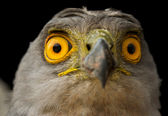
Previous research had shown that birds seem to have an internal compass that allows them to "see" Earth's magnetic field. This magnetic vision guides them on long journeys.
Scientists have also studied a protein molecule, called cryptochrome, that drives the chemical processes behind the birds' magnetic abilities.
But what the molecule was reacting with to create birds' special sight has been a mystery - until now.
Due to a laboratory mishap, scientists have discovered that toxic superoxides may be the previously missed ingredient.
"One of the researchers in our lab noticed that compounds called superoxides would partner very well with reactions associated with cryptochrome," said study co-author Klaus Schulten, a biophysicist at the University of Illinois at Urbana-Champaign.
"However, what he did not realize was that superoxides are toxic to cells," Schulten explained.
Although their initial reaction was to discard the experiment, the research team realized that low levels of superoxide would work with cryptochrome without damaging birds' eyes.
Toxic Trade-Off
Other researchers studying birds' magnetic vision have ignored superoxides because of the compounds' toxicity.
But the new study shows that the damaging substance forces bird immune systems to keep superoxides at low concentrations. Such small amounts allow a safe interaction with cryptochrome.
Cryptochrome is also present in the human eye, but our amount of superoxides is even lower.
That's because superoxides reduce longevity, so human evolution has put a premium on longer life spans instead of on better steering.
In birds, however, evolution has favored a bit of cellular damage in return for the navigational benefits of magnetic vision, the researchers conclude.
Research appeared June 17 in the Biophysical Journal.



Reader Comments
to our Newsletter